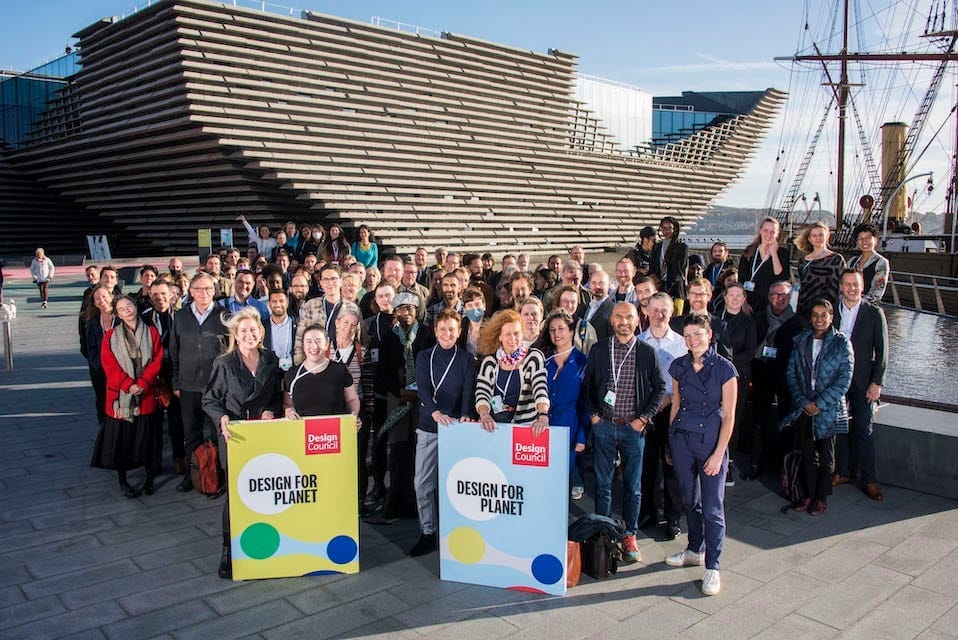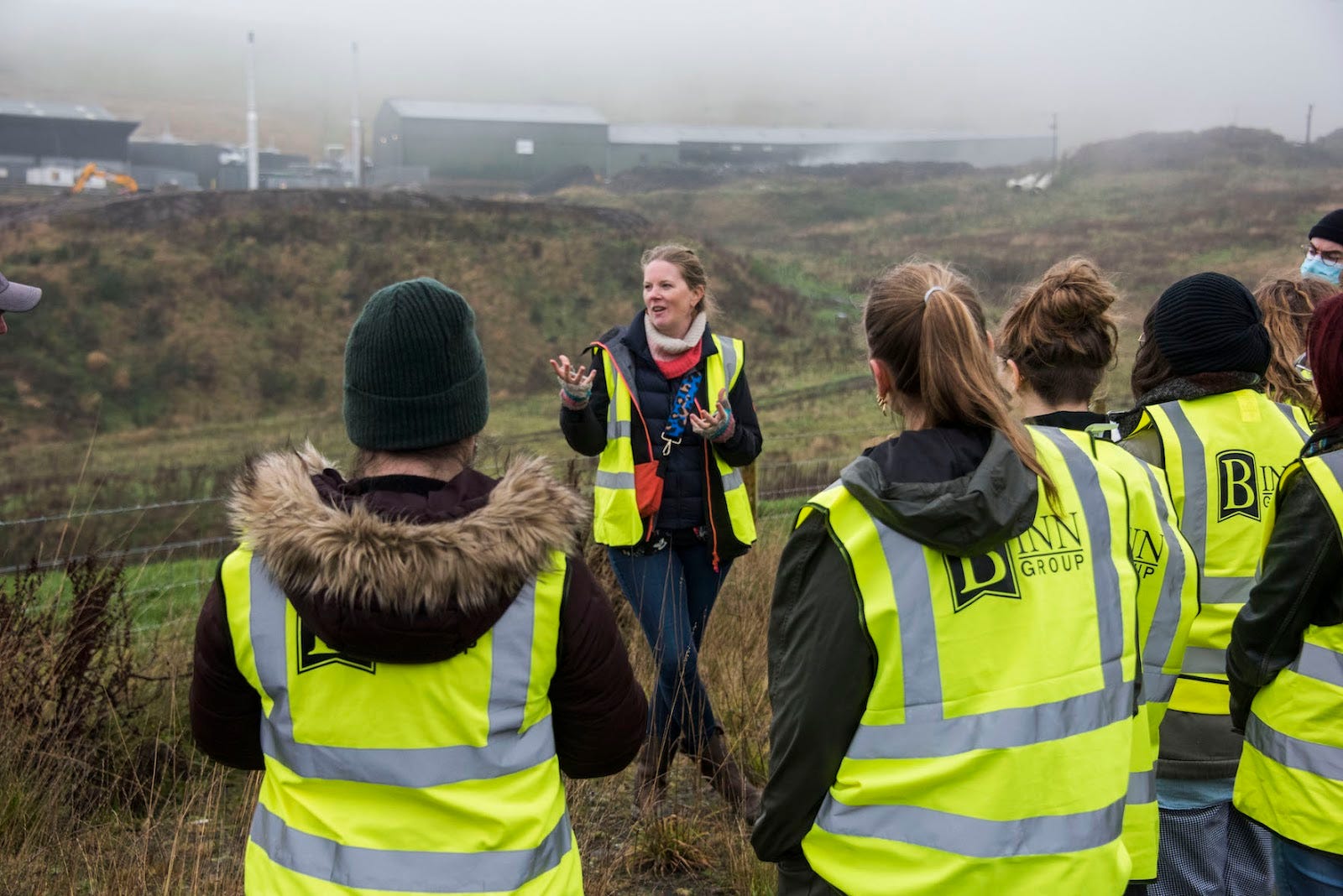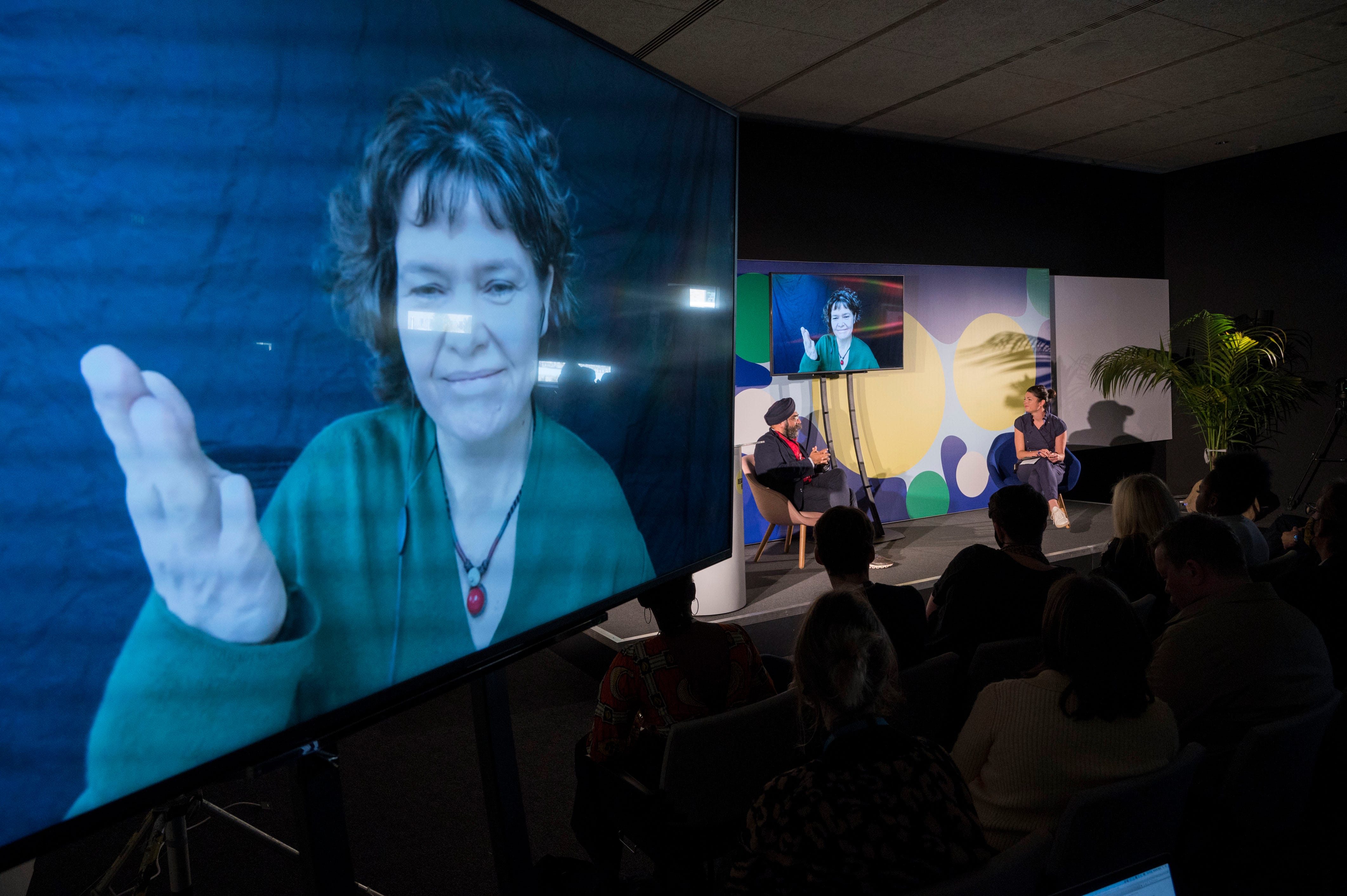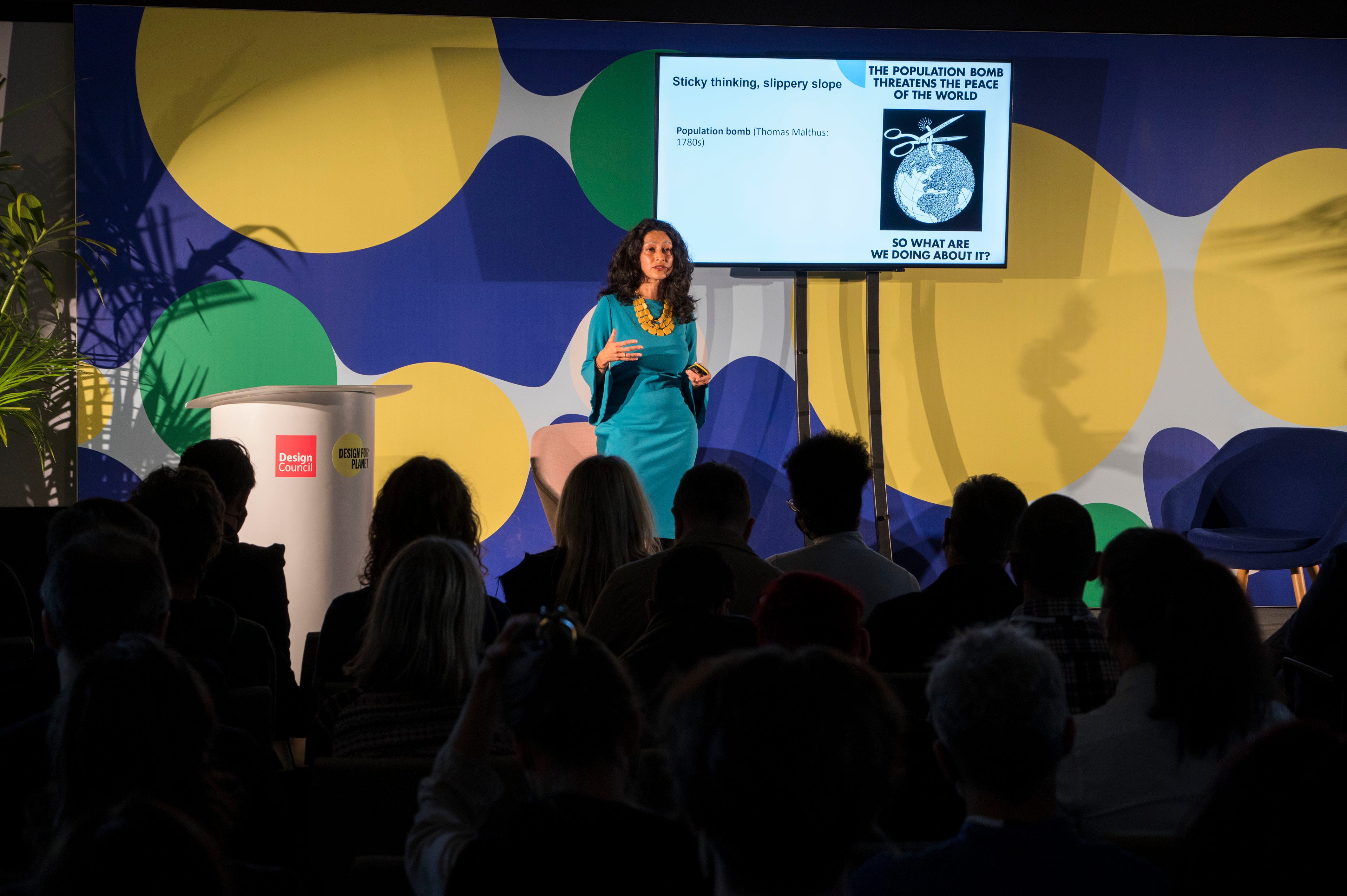
Design for Planet delegates and speakers at V&A Dundee. Image: Design Council
Last week, URGE was among the 150 designers and sustainability experts gathered at V&A Dundee for Design Council’s Design for Planet conference. We’ve picked out some highlights from the programme (which you can watch online for free) and some further reading
Before the conference proper got under way, URGE’s Sophie Thomas led a a tour of Binn Ecopark’s state-of-the-art recycling and resource management facilities followed by a workshop highlighting how end-of-life waste materials can be reutilised in design projects, promoting greater sustainability and closing the loop of circular processes. Design Week’s Molly Long reports on the day here

Sophie Thomas at Binn Ecopark outside Perth. Image: Design Council
The conference began with an inspiring address from 17-year-old activist Anita Okunde, who was introduced by Design Council CEO Minnie Moll.
But it was the first session of the day which framed the big intellectual challenge that many had hoped for from the event. Introducing economist Kate Raworth and systems architect Indy Johar, Design Council Chief Design Officer Cat Drew made the point that, “In order to fundamentally redesign how we live our lives, we have to design at the level of economic models, of governance and of beliefs about what we all value in society. If we can redesign these things, they provide the context from which all other design flows - our places, our products and services.”

Kate Raworth (on screen) and Indy Johar. Image: Design Council
Together, Raworth and Johar laid out the opportunities for design in a cyclical, circular, regenerative economy. How design can help distribute opportunity and value rather than help it accrue to the few. And how to recognise the entangled nature of things and their value.
Watch their session back here (it’s definitely worth your time!)
Kate Raworth’s site is here which includes and introduction to her theory of Doughnut Economics
Read more from Indy Johar at his Medium site here

Payal Arora. Image: Design Council
Anthropologist Payal Arora reminded us that the next billion users of tech platforms will come from the Global South but that rather than arrogantly thinking that we have to design for them, we have much to learn from cultures in which frugality, preparing products, subsistence and collectivism are embedded. Rather than scapegoating the Global South, or seeing it as a barrier to change, we can learn from African developers who are already producing the kind of data-lite apps that would help all of us reduce energy consumption. Watch her talk here
While so much of design is concentrated on attracting consumers to a product or service snd making sure their experience of it is valuable, virtually no time is spent thinking about the end of that relationship - the ‘offboarding’ rather than on boarding experience. “That last third is a lonely passage for the consumer,” says Joe Macleod, leaving us abandoned, uninstructed, divorced from responsibility for that for which we no longer have a use. His Endineering project outlines an alternative approach - watch the talk back here
There has been some progress in the ad community in terms of measuring the carbon footprint of its campaigns, but, as Purpose Disruptors’ Jonathan Wise argued, that ignores the much bigger issue of the impact of those campaigns. “We can talk about our own carbon footprint, how we make what we make, those are small conversations. I want to talk about the consequence of all the stuff we put into the world. Are we actually helping or just making things worse?” Watch his talk back here
In order to encourage the ad industry to take full responsibility for its environmental impact, Purpose Disruptors has launched the Advertised Emissions report. “Advertised Emissions is designed to provide clarity to the advertising industry (clients, agencies, media owners and regulators) about the impact of campaigns on the overall transition to net zero… [it] provides a measurement framework so the industry, as architects of demand, can switch from promoting high-carbon brands and categories to low-carbon alternatives, thus accelerating the societal shift towards a sustainable future.” Download the report here
That’s just a few highlights from a fascinating and challenging two days. All the non-workshop sessions (including those featuring URGE’s Sophie Thomas and Michael Pawlyn) can be watched here
For an alternative view, RSA Director of Design+Innovation Dr Joanna Choukeir has blogged about the conference here
The question now is ‘what’s next?’ URGE hopes to be part of that conversation, helping to create the tools and frameworks that will allow designers to move us to a regenerative future for all and pushing for radical change. Design for Planet was a great start, but there’s a lot of hard work to do.

